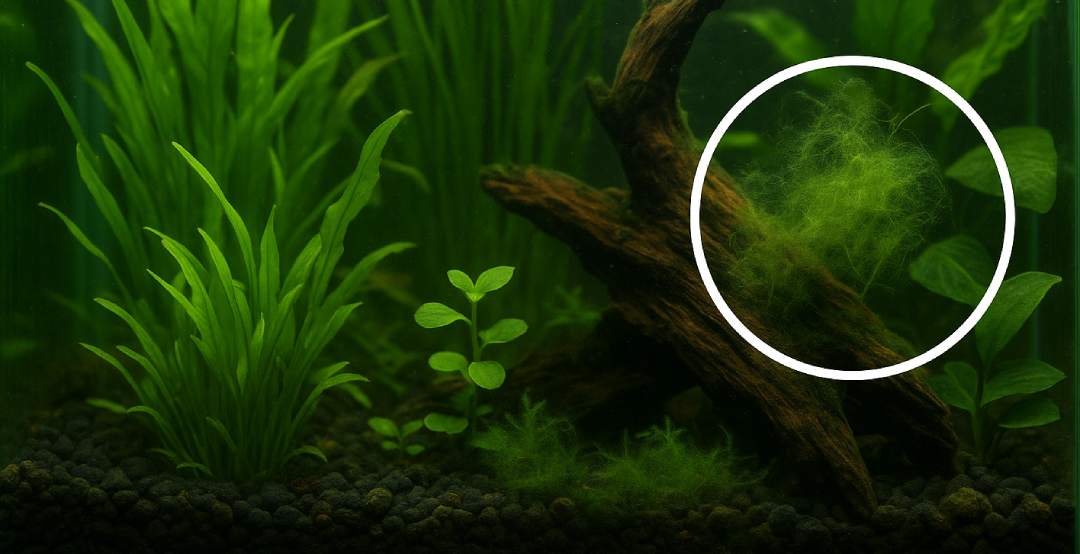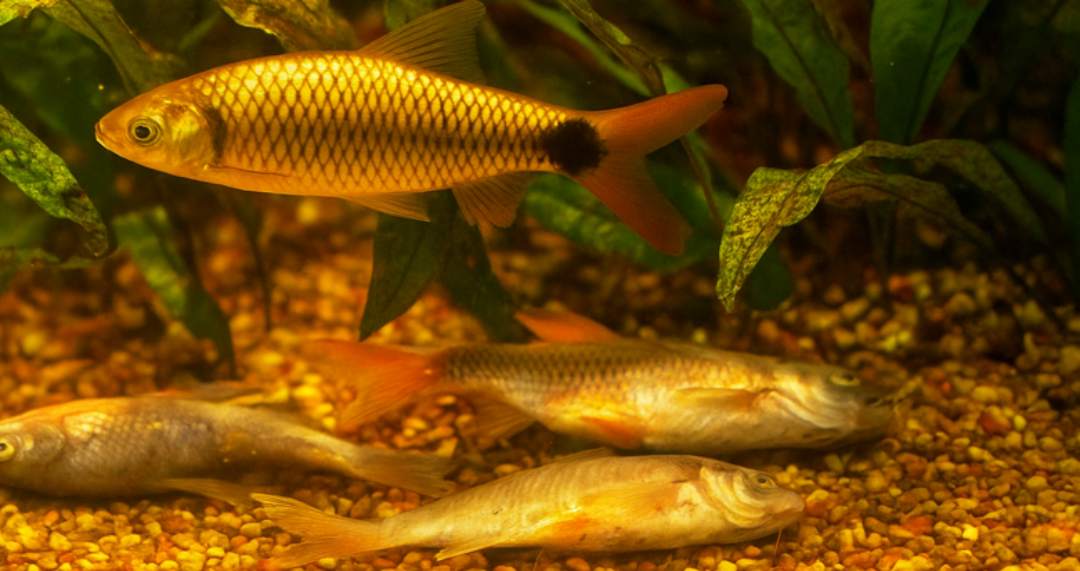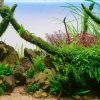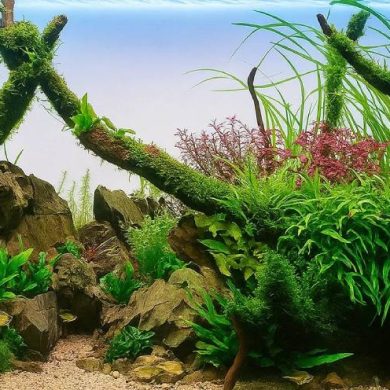Understanding Aquarium Plant Diseases: Types, Dangers, Common Issues & Prevention
Healthy aquatic plants are the backbone of a thriving aquarium. They produce oxygen, consume waste, and provide shelter for fish and invertebrates. When plants become sick, they can quickly destabilize the tank’s ecosystem. This guide explains the major types of aquarium plant diseases, highlights which problems are most dangerous, identifies the most common ailments, and provides practical advice on how to protect and revive your aquatic garden.
Why Aquarium Plants Get Sick
Aquarium plants live in a controlled environment that can fluctuate quickly. Factors such as nutrient imbalances, lighting issues, contaminants, poor water quality, and pests all contribute to disease. Unlike terrestrial plants, aquatic species are submerged; this changes how they absorb nutrients and respond to pathogens. Recognizing the underlying causes of plant ailments is the first step in preventing them.
A healthy planted tank balances three critical elements:
- Water Chemistry: Adequate levels of macro and micro nutrients (nitrogen, phosphorus, potassium, iron, calcium, and magnesium) are necessary for growth. Extreme pH, hardness or contamination can harm plants.
- Lighting and Carbon: Aquatic plants rely on light and dissolved carbon dioxide for photosynthesis. Too much or too little lighting or carbon supplementation leads to stress and disease.
- Maintenance: Regular water changes, substrate vacuuming, and pruning prevent organic waste from accumulating. Cleanliness discourages pathogens and pests.
Understanding and balancing these factors prevents most diseases before they take hold.
Types of Aquarium Plant Diseases and Problems
Diseases in aquarium plants fall into broad categories: nutrient deficiencies, algae infestations, fungal or bacterial diseases, root and stem rot, and pest infestation. Each has specific symptoms and degrees of danger.
Nutrient Deficiencies (Plant Malnutrition)
Plant malnutrition is not a pathogen but a physiological disorder. It is one of the most common problems aquarists encounter, and if left untreated, it can severely weaken plants, making them susceptible to infections. The following deficiencies are commonly seen in aquariums:
- Nitrogen (N) Deficiency: Nitrogen fuels growth. When lacking, older leaves turn yellow and translucent while new leaves remain smaller. Plants cannibalize older foliage to sustain new growth, leaving the tank looking bare.
- Iron (Fe) Deficiency: Iron is critical for chlorophyll production. New leaves appear pale yellow while veins remain darker. Growth becomes stunted and plants lose their green vibrancy.
- Potassium (K) Deficiency: Pinholes surrounded by yellow or brown edges appear on leaves. This weakness invites algae and fungal growth.
- Phosphate (P) Deficiency: Older leaves yellow and develop translucent brown patches. Green spot algae often colonize these weakened areas.
- Magnesium (Mg) Deficiency: Without magnesium, older leaves droop and their edges curl downward. Symptoms mimic iron deficiency but primarily affect mature leaves.
- Calcium (Ca) Deficiency: New leaves grow twisted or gnarled because calcium helps build cell walls. Calcium deficiencies commonly occur in soft water and make plants more prone to rot and melting.
Although deficiencies are not contagious diseases, they create conditions that allow harmful organisms to proliferate. Regular fertilization, root tabs, and quality substrate prevent malnutrition. Use test kits or observe your plants’ appearance to diagnose specific deficiencies.
Algae Infestations
Algae are a natural part of aquatic ecosystems, but unchecked growth can smother plants and block light. In severe cases, algae physically harm foliage and encourage decay. The most troublesome algal problems include:
- Black Beard Algae (BBA): This dark, tufted algae attaches to leaves, driftwood, and equipment. BBA thrives in tanks with fluctuating carbon dioxide and low water flow. Once established, it is stubborn and resilient. Manual removal, hydrogen peroxide dips, liquid carbon supplements, and maintaining consistent CO₂ levels are common treatments.
- Blue‑Green Algae (Cyanobacteria): Often mistaken for algae, cyanobacteria form slimy blue-green or black mats on substrates, decorations and plant leaves. It gives off a musty odor and can suffocate plants by blocking light. Causes include low water movement, excessive nutrients and poor filtration. Removal involves siphoning the slime, improving circulation, reducing organic waste, adjusting lighting, and sometimes using antibiotics like erythromycin.
- Green Spot Algae: Hard green dots on leaves occur with high light and low phosphate levels. While not deadly, they mar plant aesthetics and indicate imbalanced nutrients.
- Hair Algae and Thread Algae: These form long, thin filaments that entangle plant leaves. They arise from excess nutrients and light imbalance. Manual removal and the introduction of algae-eating shrimp or fish help control them.

Algae outbreaks are among the most common issues in planted aquariums. They are not inherently dangerous unless they overrun the tank, but they signal underlying imbalances that could harm plants over time.
Fungal and Bacterial Diseases
True fungal and bacterial diseases in aquarium plants are less common than nutrient issues and algae, but they can be more dangerous when they occur. Common fungal-like problems include:
- Water Mold and Saprolegnia: These appear as fuzzy, cotton-like growths on dead or decaying plant tissue. They thrive in stagnant areas or around rotting organic matter. In healthy tanks they are harmless decomposers, but on living tissue, they cause lesions and rot. Cutting away affected areas and improving circulation stops their spread.
- Root Rot and Stem Rot: Root rot is among the most dangerous diseases for aquatic plants. It occurs when roots remain in an anaerobic, oxygen‑poor substrate. Bacteria like Pythium and Phytophthora flourish, turning roots mushy and brown. Signs include yellowing leaves, foul smell, and gas bubbles when disturbing the substrate. Stem rot shows similar symptoms in rhizomes and stems. Once rot sets in, affected sections must be trimmed and discarded. Prevent rot by using breathable substrate, avoiding compacting soil, and preventing stagnant zones in the gravel.
- Bacterial Leaf Spot: Some aquatic plant species develop translucent spots or holes due to bacterial infection, often caused by poor water quality or nutrient stress. These spots can expand and kill leaves. Improving water quality and removing affected foliage helps recovery.
Because fungal and bacterial diseases progress rapidly, early detection and removal are critical. Maintaining clean water, providing adequate water flow and avoiding overcrowding deter pathogens from gaining a foothold.
Pest Infestations and Hitchhikers
New plants sometimes introduce hitchhiking organisms that attack foliage, compete for nutrients or prey on aquarium inhabitants. While most pests are not deadly to plants, they can damage leaves and stress other tank inhabitants. The most notable hitchhikers include:
- Snails (Ramshorn, Malaysian Trumpet, Pond Snails): Snails arrive on plants as eggs or tiny adults. In moderation they clean algae and aerate substrate, but uncontrolled populations consume tender plant shoots and overrun the tank. Quarantine and manual removal keep snails in check, and snail‑eating fish such as loaches help control populations.
- Planaria: These tiny flatworms regenerate when cut and multiply quickly. They glide over surfaces, feeding on leftover food, shrimp eggs and sometimes soft plant tissue. While not fatal to plants, planaria indicate overfeeding and poor cleanliness. Reducing excess food and performing water changes starves planaria.
- Hydra: Hydra are small, predatory polyps with stinging tentacles that attach to glass or leaves. They feed on micro‑organisms and occasionally sting fish fry. Hydra do not directly harm plants, but their presence signals an overcrowded or nutrient-rich environment. Treatments include reducing feeding, manual removal or using medications like fenbendazole.
- Damselfly Larvae and Dragonfly Nymphs: These predatory insects sometimes hitchhike on plants or in root wads. They prey on small fish, shrimp and sometimes nip plant leaves while hunting. Quarantine new plants and inspect them carefully to avoid introducing these predators.
Thoroughly inspecting and disinfecting new plants prevents most pest infestations. Using tissue-cultured plants, which are grown in sterile conditions, eliminates hitchhikers.
Plant Melting and Transplant Shock
“Melt” refers to the sudden disintegration of leaves after plants are introduced into a new aquarium or when water conditions change. This is not a disease caused by pathogens but a physiological response. Many aquatic plants sold in stores are grown emersed (with leaves above water).

When submerged, the emersed leaves die off and are replaced by new underwater growth. Plants may also melt due to drastic changes in temperature, light intensity, CO₂ levels or nutrient dosing. While alarming, melting is a normal adaptation process for species such as Cryptocoryne, swords and stem plants. Removing decaying leaves and maintaining stable conditions encourages recovery.
Which Diseases Are Dangerous vs. Common
Not all plant ailments carry the same risk. Some are mere cosmetic issues, while others can wipe out a tank’s vegetation.
- Most Dangerous: Root rot and stem rot are the most destructive because they kill plants from the base and spread unnoticed. Advanced nutrient deficiencies (especially nitrogen and iron), severe algae smothering, and rampant pest infestations can weaken plants to the point of collapse. Aggressive fungi such as water mold on live tissue also pose serious threats.
- Common but Manageable: Nutrient deficiencies, black beard algae, cyanobacteria, green spot algae and minor snail infestations are widespread problems. They are usually manageable through proper tank maintenance, balanced fertilization and manual control. Plant melting is common when starting a new tank, but with patience plants recover.
- Rare: True viral diseases and systemic bacterial infections in aquarium plants are rare in home aquariums. When plants suddenly die without visible symptoms, check other factors such as herbicide contamination, poor water quality or predation by fish.
How to Protect Aquarium Plants From Diseases
Preventing disease is easier than curing it. Adopt these best practices to keep your aquatic plants vibrant and healthy:
1. Quarantine and Disinfect New Plants
Always quarantine new plants for at least a week before adding them to your main tank. During quarantine, inspect the plants for snails, insect larvae, planaria or algae. You can also disinfect plants using dips:
- Bleach Dip: Mix 19 parts water to 1 part unscented household bleach. Submerge plants for two to three minutes, then rinse thoroughly with dechlorinated water. Avoid delicate species like mosses and ferns, which may be harmed by bleach.
- Hydrogen Peroxide Dip: Use a solution of one part 3% hydrogen peroxide to three parts water. Soak plants for fifteen minutes, then rinse. Hydrogen peroxide is milder than bleach and kills many algae and pests.
- Alum Dip: Dissolve one tablespoon of alum powder (potassium aluminum sulfate) per gallon of water. Soak plants for up to three days to remove snails and eggs.
- Potassium Permanganate Dip: Create a dark pink solution and dip plants for up to twenty minutes. Rinse thoroughly. Potassium permanganate kills algae, bacteria and parasites but should be used cautiously.
Tissue-cultured plants grown in sterile gel require no dipping; simply rinse off the gel and plant.
2. Maintain Optimal Water Parameters
Healthy water fosters healthy plants. Monitor and maintain these parameters:
- Nitrate (NO₃): 10–20 ppm for most planted tanks. Too high encourages algae; too low causes nitrogen deficiency.
- Phosphate (PO₄): 0.5–1.5 ppm. Low phosphate leads to green spot algae and plant starvation.
- Potassium (K): 10–20 ppm. Use liquid fertilizers or root tabs to supply potassium.
- Iron (Fe) and Micronutrients: Dose chelated iron and trace mixes weekly to prevent pale growth.
- pH and Hardness: Many plants prefer a slightly acidic to neutral pH (6.5–7.5). Adjust the hardness to provide adequate calcium and magnesium. Use crushed coral or mineral supplements if the water is too soft.
- Temperature: Keep water within the preferred range for your plant species (typically 20–28°C or 68–82°F). Extreme temperatures stress plants and promote disease.
Regularly test water and adjust fertilization accordingly. Balanced nutrients discourage algae and support robust growth.
3. Provide Appropriate Lighting and CO₂
Match your lighting to plant requirements. Low‑light species like Anubias and Java fern need gentle illumination, while stem plants and carpets require stronger aquarium lights. Use a timer to provide 8–10 hours of light daily; longer periods encourage algae. Consider injecting CO₂ or dosing liquid carbon to support photosynthesis and outcompete algae. Avoid drastic fluctuations in CO₂ levels, which can trigger black beard algae outbreaks.
4. Practice Good Tank Maintenance
Routine maintenance prevents the buildup of decaying matter and pathogens:
- Water Changes: Replace 25–50% of the tank water weekly to dilute waste, replenish essential minerals, and stabilize the environment.
- Substrate Vacuuming: Gently vacuum the substrate to remove detritus without uprooting plants. This prevents the formation of anaerobic pockets and root rot.
- Pruning and Removing Dead Leaves: Trim dying leaves and stems regularly. Decomposing plant material fuels bacteria and fungi.
- Control Feeding: Overfeeding fish leads to excess organic waste, fueling algae and pests. Feed only what fish consume within a few minutes.
- Clean Equipment: Rinse filters and remove debris from pumps and tubing. Good water circulation discourages cyanobacteria and fungi.
5. Use Biological Controls and Natural Predators
Introduce algae-eating and pest-controlling species to maintain balance. Siamese algae eaters, Amano shrimp, nerite snails, and Otocinclus catfish graze on various algae. Loaches and assassin snails consume pest snails. Ensure that any predator species are compatible with your tank’s inhabitants.
6. Be Patient and Observant
Many plant issues develop slowly. Observe your aquarium daily and note any changes in leaf color, texture or growth pattern. Early detection of yellowing leaves, spots or fuzzy growth allows you to intervene before problems spread. When in doubt, test water parameters and adjust fertilization or lighting accordingly.
Conclusion
Aquarium plants are resilient but not immune to disease. Nutrient deficiencies, algae infestations, fungal pathogens, root rot, and pest hitchhikers are the primary challenges facing aquarists. While some issues like plant melting and minor algae growth are common and manageable, others like root rot or advanced malnutrition pose serious dangers. Prevention is far easier than cure: quarantine new plants, maintain balanced water chemistry, provide appropriate lighting and CO₂, keep the tank clean, and introduce biological controls. With attentiveness and care, your aquatic plants will thrive, providing a lush, natural environment for your fish and becoming a beautiful focal point of your aquarium.






Add comment